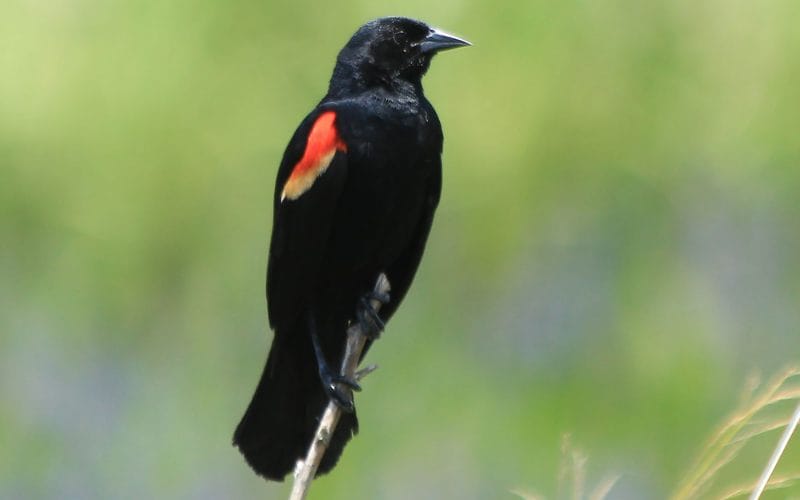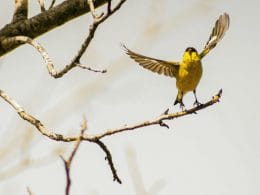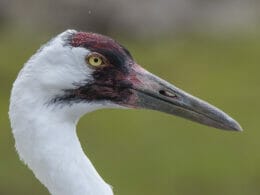We know that crows and ravens are scavengers. Some people see them as a pest and a noisy nuisance. Those of us that love birds see them as smart and entertaining. Ask anyone what they eat and you will get a range of answers, mostly relating to scavenging. But are they just scavengers? In this post we will find out the truth about these interesting Corvids.
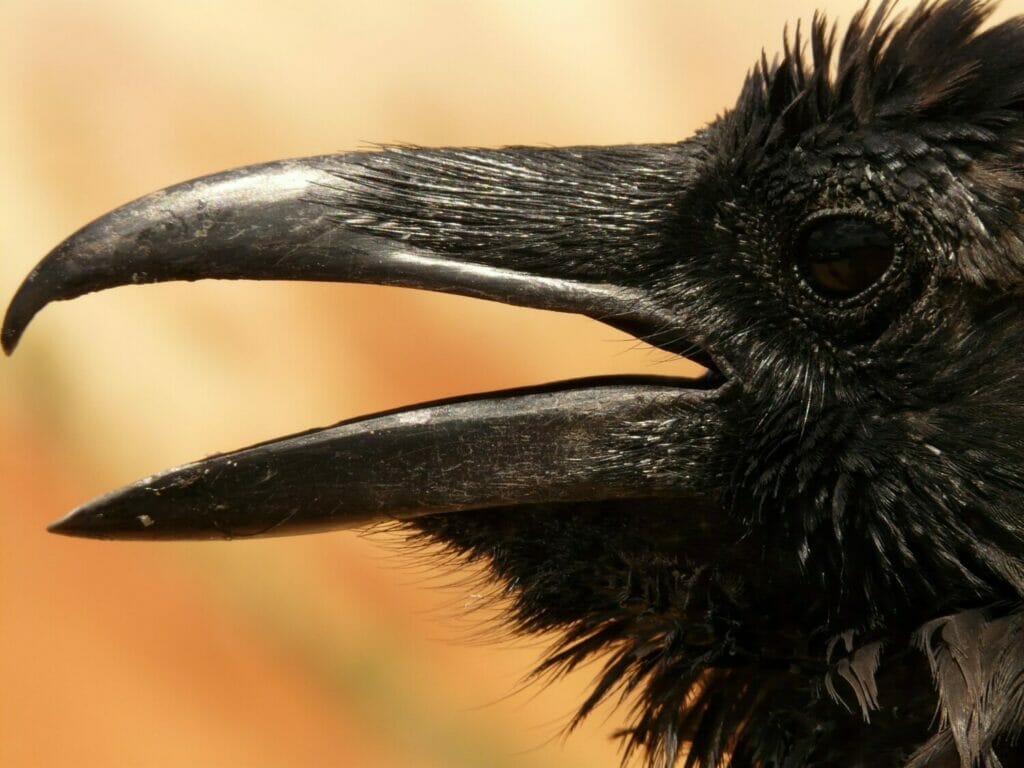
Crows and Ravens in the U.S.
The Corvid family is an interesting one. The following birds are included in this large group:
- Jays
- Scrub-Jays
- Nutcrackers
- Magpies
- Jackdaws
- Crows
- Ravens
In the United States and according to the ABA (American Birding Association) there are 2 species of raven and 4 of crows that are either resident or visit continental America. Of those, there one of each which are common and it is those species we will use as case studies.
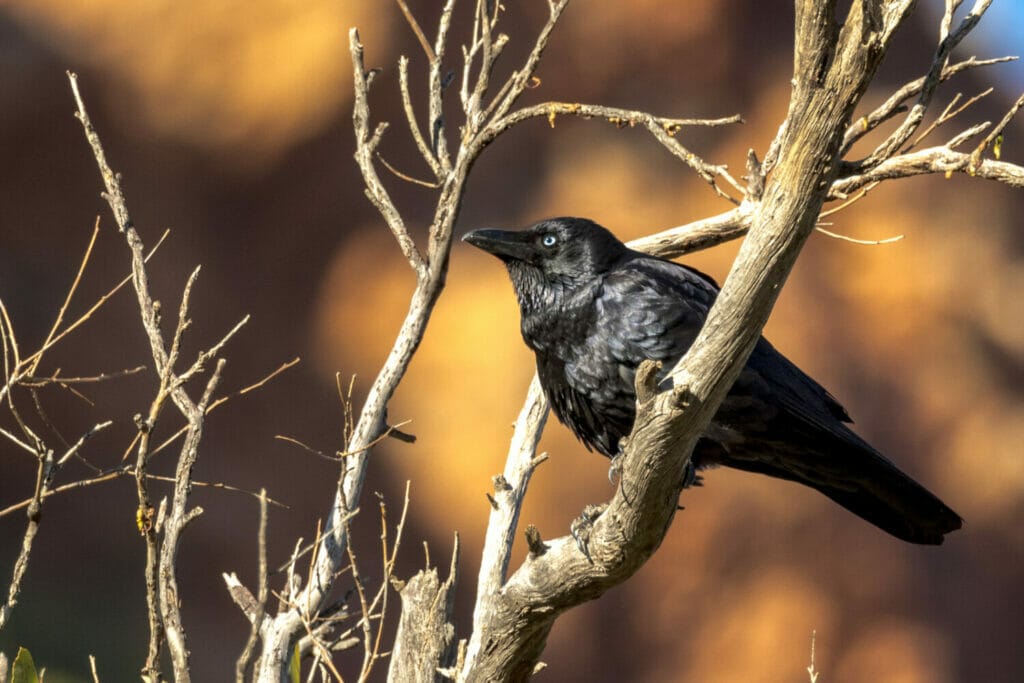
American Crow (Corvus brachyrhynchos)
Identification
The American Crow is a smaller corvid with a glossy black coat. The bill is relatively slender with no real visible nasal bristles.
Size
- Length: 15.8-20.9 in (40-53 cm)
- Weight: 11.2-21.9 oz (316-620 g)
- Wingspan: 33.5-39.4 in (85-100 cm)

Range
The American Crow can be found all year round across the U.S. Concentrations are less in the arid south west.
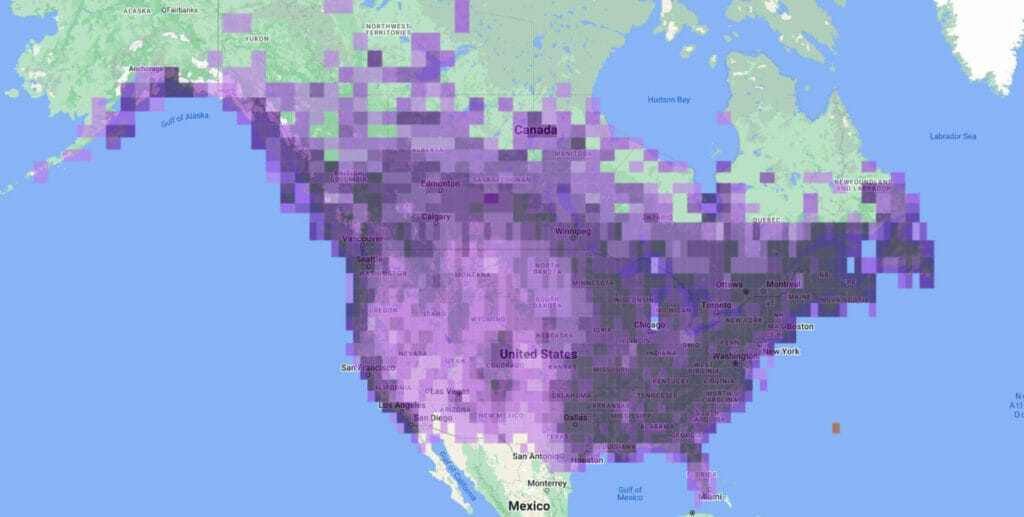
Habitat
The American Crow needs two things in terms of habitat:
- open ground
- trees and plants
Suitable areas include farmlands, parks, pasturelands and even urban areas. They are adaptable and will use open areas like roads to reach other suitable areas. They can be found in hilly and mountainous areas as long as there is not thick forest.
Migration
Points to notice from the Cornell migration map below:
- The American Crow moves into very dry areas in the south during non-breeding periods.
- It is present all year round across the center swathe of continental America and southern Alaska.
- The crow breeding area includes extensive parts of Canada.
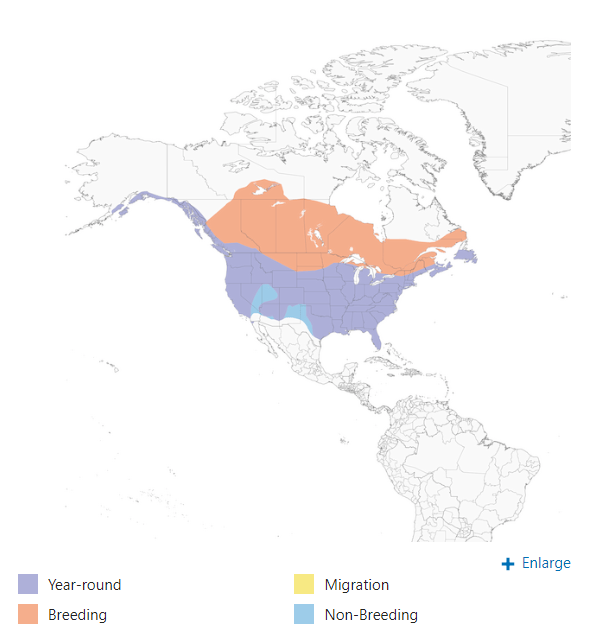
Common Raven (Corvus corax)
Identification
This is a larger corvid with a glossy black coat. The large bill has a kink in it and there are visible nasal bristles.
Size
- Length: 22.1-27.2 in (56-69 cm)
- Weight: 24.3-57.3 oz (689-1625 g)
- Wingspan: 45.7-46.5 in (116-118 cm)
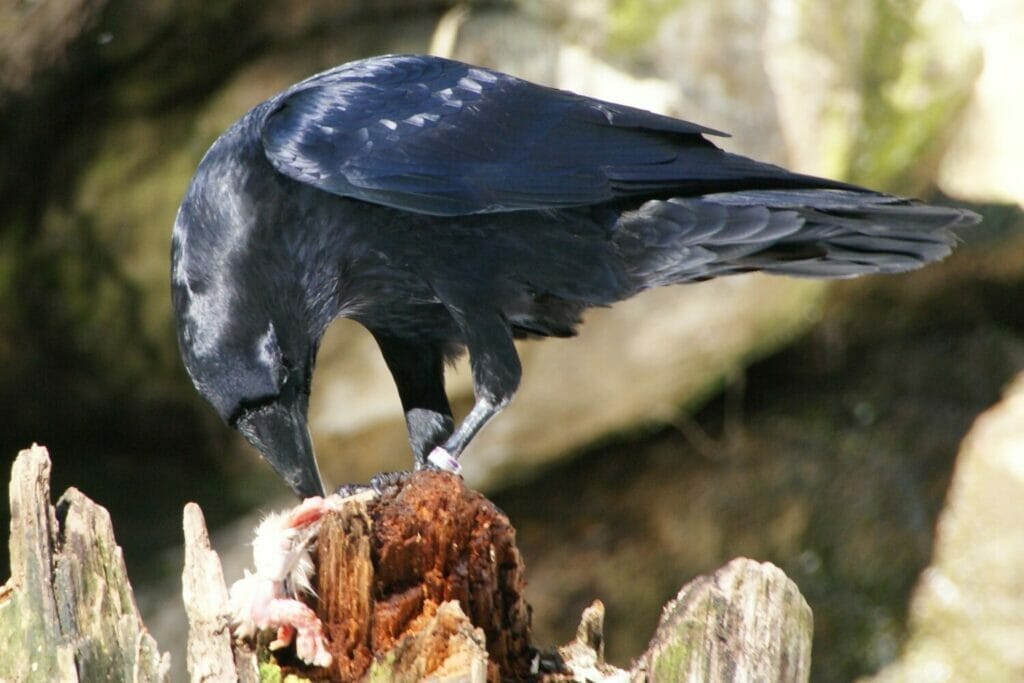
Range
The Common Raven can be found across the U.S. except in the area from the mid-West to south east. It is also resident throughout Europe.
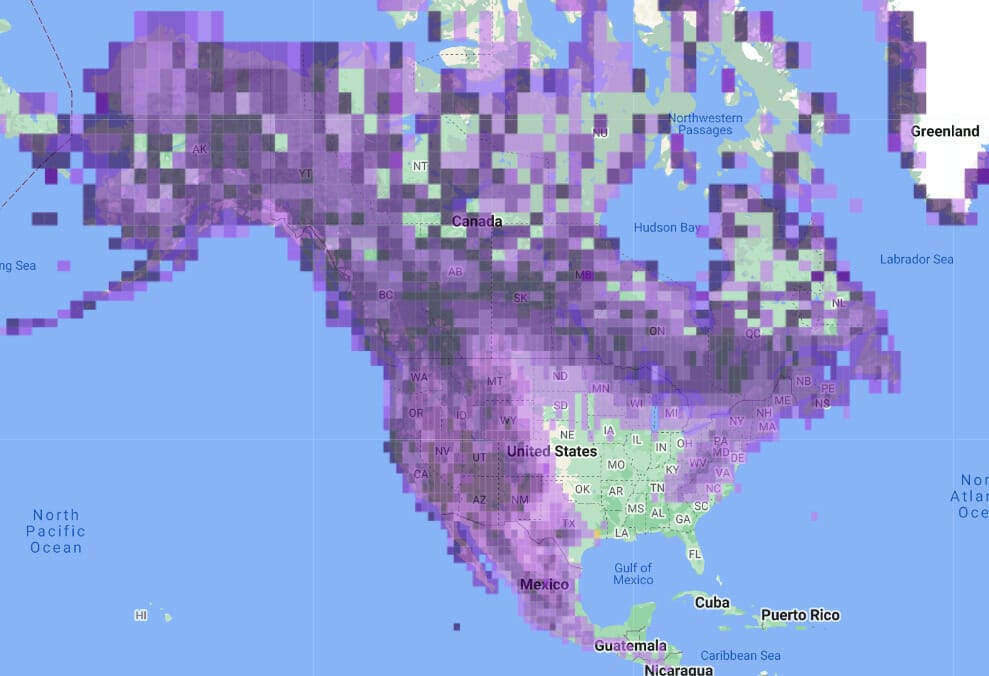
Habitat
The Common Raven is extremely adaptable in terms of habitat and can survive and thrive in the following areas:
- deserts
- coasts
- forests
- mountains
- tundra
- urban and rural towns (rare in large cities)
Migration
The Common Raven is not migratory. It is present and resident throughout the northern hemisphere.

How to tell a Common Raven from an American Crow
These birds are notoriously difficult to tell apart by sight alone. Here are some other differences to help distinguish between them.
- The American Crow is noticeably smaller.
- The Common Raven has a larger bill with a noticeable bow in it.
- American Crows are more likely to be seen in larger groups. Common Ravens tend to be alone.
- The Common Raven has distinct nasal bristles.
- The American Crow has a caw-caw call whereas the Common Raven has a guttural, raspy call.

Calls of the American Crow and Common Raven
Below are examples of the calls of each bird, another good way to tell them apart.
Common Raven
American Crow
What do they eat?
Both our study species are classed as omnivorous, meaning they are opportunists and will eat anything they can find. Below are some examples.
| American Crow | Common Raven |
| terrestrial invertebrates | terrestrial invertebrates |
| marine invertebrates | arthropods including scorpions |
| amphibians and reptiles | amphibians and reptiles |
| small birds and mammals | small birds and mammals |
| birds’ eggs, nestlings and fledglings | birds’ eggs, nestlings and fledglings |
| grain crops | grain crops |
| seeds and fruits | seeds and fruits |
| carrion | carrion |
| food scraps | food scraps |
So, we can see they eat pretty much the same things. They have even been known to scavenge for cow placenta, eat dung and take seaweed.
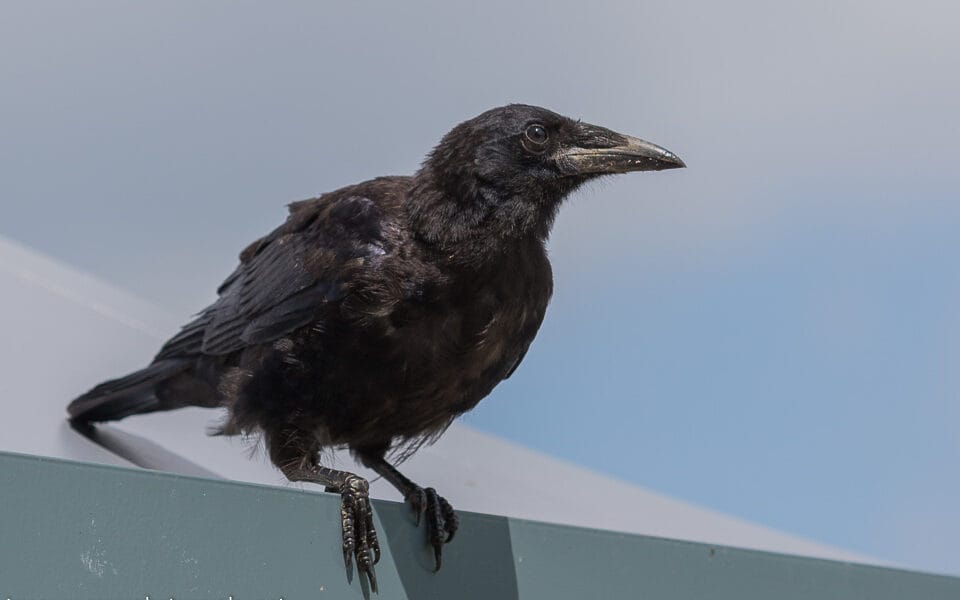
Do Crows and Ravens hunt?
It’s all about the bill
While the American Crow and Common Raven look like strong, robust birds with large bills, they do not actually have the ability to tear open flesh. This dictates what they do or do not eat.
Helpless animals
I think the key word here is opportunism. If these corvids see a helpless newborn animal, for example, they might peck at the eyes. Why the eyes? Because they are soft and the birds can attack them.
Carrion
The biggest reason that these corvids are seen scavenging at roadkill, which gives them a reputation of being dirty and unpleasant, is because the semi-destroyed carcasses are opened up. The crow and raven cannot tear through the skin. Roadkill represents an easy meal.
Other birds
Again, if a bird is helpless, crows and ravens will take advantage of that and prey upon them. This includes:
- unattended eggs
- unguarded hatchlings and nestlings
- newly fledged chicks who cannot fly well
- smaller birds that are caught unawares
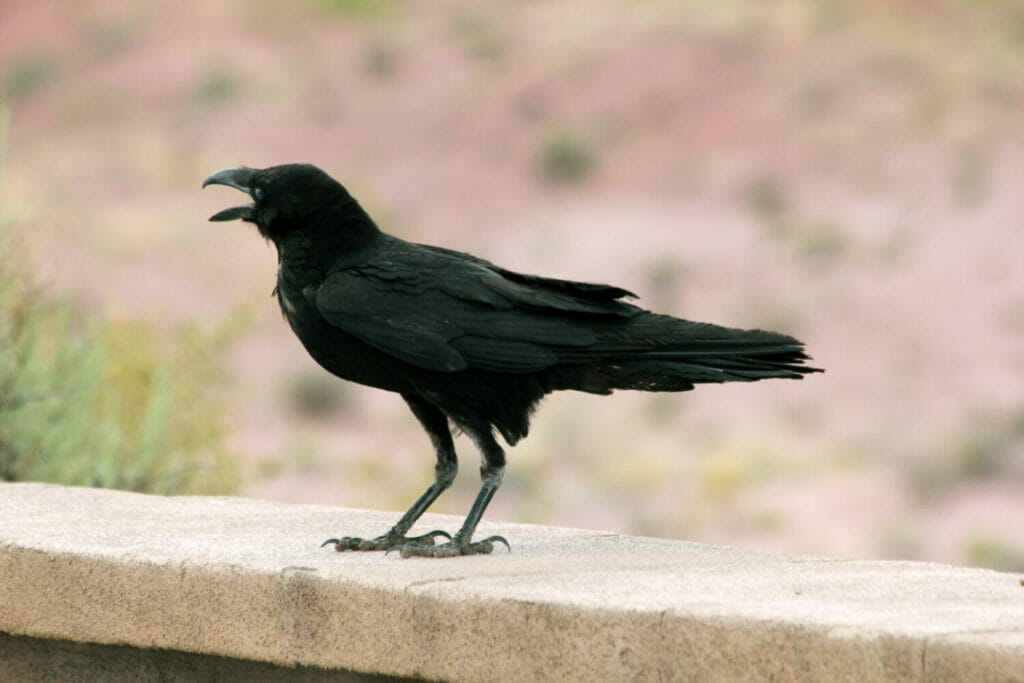
Crows, Ravens and Humans
The American Crow and Common Raven have thrived in part because of humans. The bold and confident nature of the crow and raven means they are relatively unafraid of humans. If they feel threatened by a person getting too close, they simply move and return to their business when the human has gone.
In addition, the corvids make the most of the messy nature of the human population. They scavenge on our discarded food and clean up after our roadkill on the highways.
The Intelligence of Crows and Ravens
The American Crow and Common Raven often look like they are playing, squabbling and communicating with each other. And they are. Here are some of the common behaviors of these corvids.
Play
Young birds, like other species, play with objects as they learn what things are and how to manipulate them. According to The Cornell Lab, ravens are the species that continue this behavior as they get older, perhaps to attract a mate or establish dominance.
Relating to other animals
- There are reports of both species pecking at the tail of a feeding animal and when it turns around, other birds steal their catch.
- Sometimes the birds will follow hunting canids to try to get in on the kill.
- Both species will mob predators that threaten their nests and chicks.
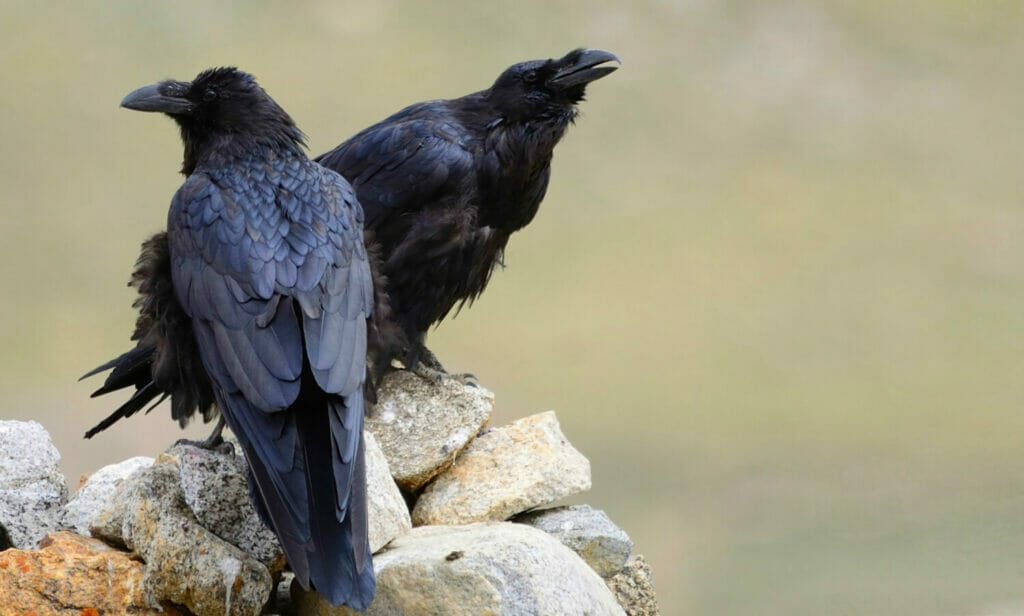
Problem solving
Corvids are famed for their problem solving prowess. The internet is full of videos showing them manipulating objects in a certain way or recognizing sequences in order to gain food. Some scientists think their intelligence level is of a seven year old child!
Conclusion
There are lots of myths about what ravens and crows eat, including a popular one about them killing pigeons. That is simply not true. These corvids do not have the strength in their bills to kill pigeons. Even if they somehow did kill a larger bird like this, they would not be able to open them up to get to the meat! However, they will scavenge on the carcass of dead pigeons, even removing other birds from the scene.
The American Crow and Common Raven are attractive and smart birds. If they have unpleasant eating habits then that is because humans have caused the circumstances.
FAQ
According to Audubon ‘Ravens have bigger, curvier beaks relative to crows. While both species have bristles at the base of the beak, the raven’s are noticeably longer. Its throat feathers are also quite shaggy. Common Ravens are much less common than American Crows in the Eastern United States.’
Flocks of crows are called a murder.
Flocks of ravens are called an unkindness
Perhaps these reflect the rather unfair reputations these birds have!
You could say they are as they are both within the Corvus genus. Magpies and Jays are also in that group and share some of the traits of the raven and crow.






